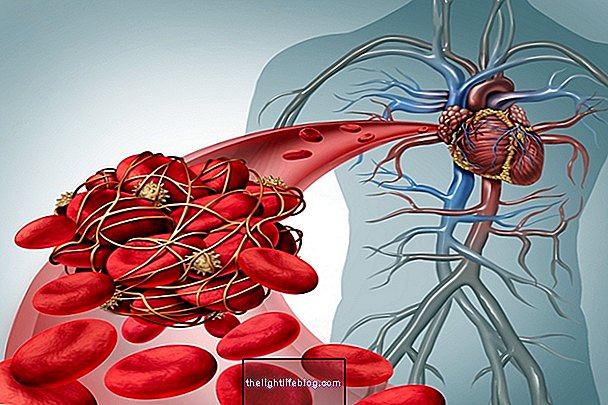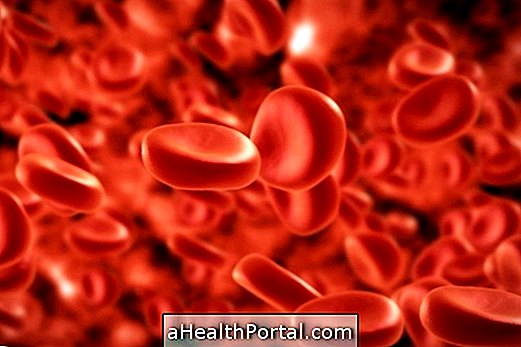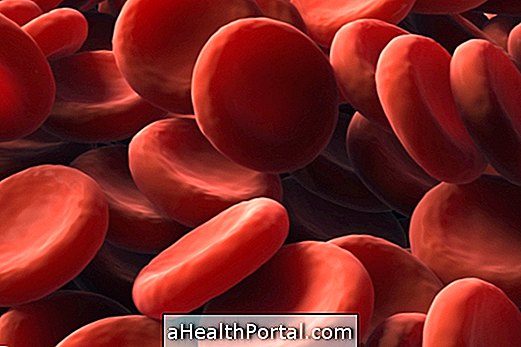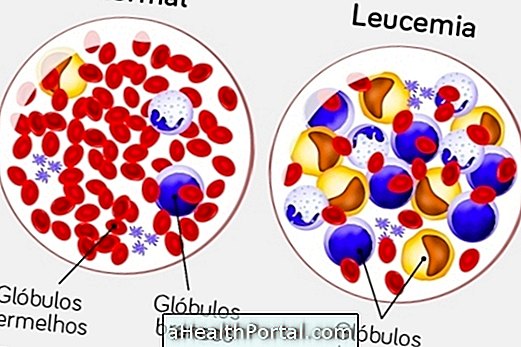Thalassemia, also known as Mediterranean anemia, is an inherited disease characterized by a defect in hemoglobin synthesis, resulting in functional changes. This is because in thalassemias one or more globin chains constituent of hemoglobin are affected, interfering in the process of transporting oxygen to the tissues.
The clinical manifestations of thalassemia depend on the number of chains affected and the type of genetic mutation that may occur, which can lead to fatigue, delayed growth, paleness and hepatomegaly, for example.
Thalassemia is a genetic and hereditary disease, not contagious or caused by nutritional deficiencies, however, in the case of some types of thalassemia the treatment may involve a diet appropriate for the case. See how the thalassemia diet is made.
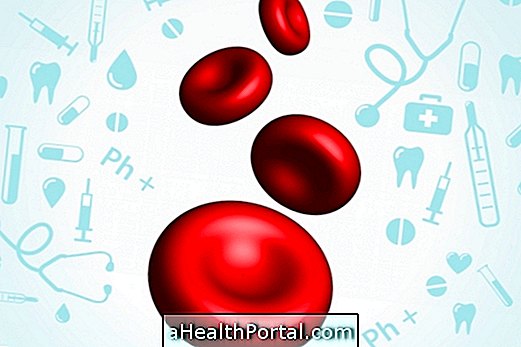
Main symptoms
In general, the minor form of thalassemia, which is the mildest form of the disease, causes only mild anemia and pallor, which is usually not perceived by the patient. However, the major form, which is the strongest type of disease, can cause:
- Fatigue;
- Irritability;
- Weak immune system and vulnerability to infections;
- Delayed growth;
- Breathing short or breathless with ease;
- Pallor;
- Lack of appetite.
In addition, over time the disease can also cause problems in the spleen, liver, heart and bones, in addition to jaundice, which is the yellowish color of the skin and eyes.
Types of Thalassemia
Thalassemia is divided into alpha and beta according to the globin chain involved. In the case of alpha thalassemias, there is a decrease or absence of production of the alpha chains of hemoglobin, while in beta thalassemia there is a decrease or absence of production of beta chains.
1. Thalassemia Alpha
It is caused by a change in the alpha-globin molecule of blood hemoglobins, and can be divided into:
- Alpha thalassemic trait: is characterized by mild anemia due to the decrease of only one alpha globin chain;
- Hemoglobin H disease: characterized by the absence of production of 3 of the 4 alpha globin-related alpha genes, being considered one of the severe forms of the disease;
- Fetal hydrops syndrome of hemoglobin Bart's: is the most serious type of thalassemia, since it is characterized by the absence of all alpha genes, resulting in death of the fetus even during pregnancy;
2. Thalassemia Beta
It is caused by a change in the beta-globin molecule of blood hemoglobins, and can be divided into:
- Thalassemia minor (minor) or Beta-thalassemic trait: one of the mildest forms of the disease, in which the person does not feel symptoms and is therefore only diagnosed after haematological examinations. In this case, it is not recommended to carry out specific treatment throughout life, but the doctor may recommend the use of folic acid supplement in order to prevent mild anemia;
- Beta-Thalassemia Intermediate: causes mild to severe anemia, and it may be necessary for the patient to receive blood transfusions sporadically;
- Beta-thalassemia major or major: it is the most severe clinical picture of beta-thalassemias, since there is no beta-globin production, and it is necessary for the patient to receive blood transfusions regularly to reduce the degree of anemia. Symptoms begin to appear in the first year of life, being characterized by pallor, excessive tiredness, drowsiness, irritability, prominent bones of the face, badly aligned teeth and swollen belly due to the increase of organs.
In cases of thalassemia major may still see slower growth than normal, causing the child to be lower and leaner than expected for the age. In addition, in patients receiving a regular blood transfusion, it is usually indicated to use drugs that prevent excess iron in the body.
How is the diagnosis made?
The thalassemia diagnosis is made through blood tests, such as the hemogram, in addition to hemoglobin electrophoresis, which aims to evaluate the type of circulating hemoglobin in the blood. Here's how to interpret hemoglobin electrophoresis.
Genetic tests may also be performed to evaluate the genes responsible for the disease and to differentiate the types of thalassemia.
The test of the foot should not be performed to diagnose the thalassemia, because at birth the circulating hemoglobin is different and has no alterations, being possible the diagnosis of thalassemia only from the third month of life.
